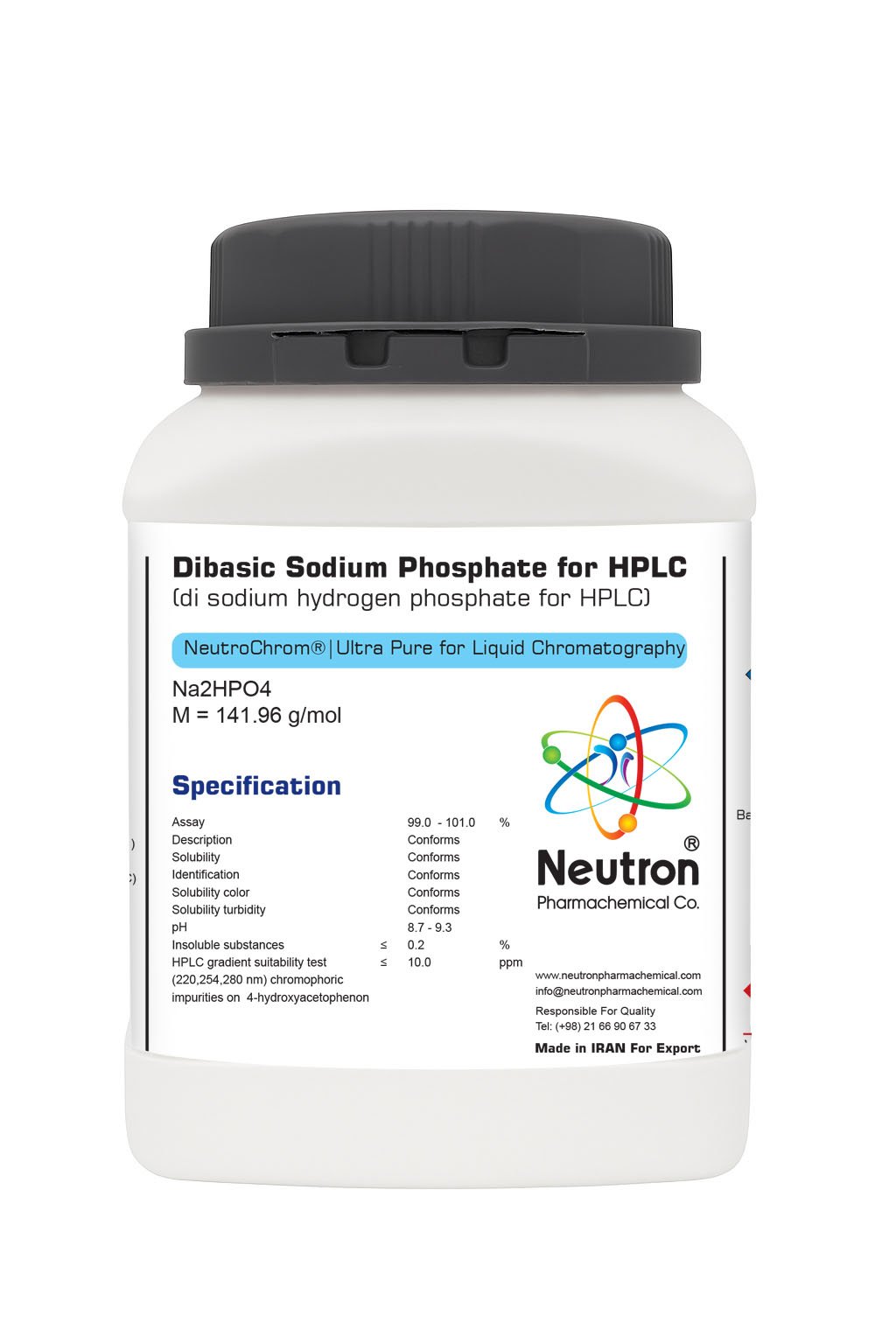Disodium hydrogen phosphate HPLC
| Formula | HNa2O4P |
| Chemical formula | Na2HPO4 |
| Density | 2.44 g/cm3 (20°C) |
| Molar mass | 141.96 g/mol |
| Bulk density | ~ 880 kg/m3 |
| CAS number | 7758- 79 -4 |
| HS Code | 28352200 |
| EC number | 231-448 – 7 |
| Storage | Without limitation |
| SDS | available |
| Odour | oderless |
| Form | solid |
| Color | colourless |
| p H | 8.7 -9.3 (10g/l 20 °C ) |
| Solubility in water | 77 g/l (20°C) |
| Solubility in ethanol | slightly soluble (20°C) |
| Melting point | ~ 250 |
| Vapour pressure | >250 °C |
| Assay | 99.0 – 101.0 | % | |
| Description | Conforms | ||
| Solubility | Conforms | ||
| Identification | Conforms | ||
| Solubility color | Conforms | ||
| Solubility turbidity | Conforms | ||
| pH | 8.7 – 9.3 | ||
| Insoluble substances | ≤ | 0/2 | % |
| HPLC gradient suitability test | ≤ | 10 | ppm |
| (220,254,280 nm) chromophoric | |||
| impurities on 4-hydroxyacetophenon |
Disodium Hydrogen Phosphate for HPLC is a pharmacopeial-grade reagent designed for use in pharmaceutical, analytical, and laboratory applications requiring precise buffer preparation and highly reproducible chromatographic performance.
🏭⚗️ Production
Prepared under GMP- and pharmacopeial-compliant conditions using high-purity disodium hydrogen phosphate (HPLC or analytical grade) dissolved in ultrapure water or supplied as a high-purity crystalline solid for buffer preparation. The material is handled in controlled environments to prevent ionic, particulate, or organic contamination. Packaged in chemically resistant, sealed laboratory containers to protect against moisture uptake and degradation. Each batch is validated according to USP, EP, HPLC, and relevant reagent-quality standards to ensure purity, uniformity, and reproducibility.
🔬 Properties
A high-purity, white crystalline solid—or a clear, colorless aqueous solution when pre-dissolved—with defined phosphate composition, excellent solubility, and stable buffering capacity within neutral to mildly alkaline pH ranges. Exhibits excellent stability under recommended storage conditions. Minor clumping or changes in granule texture may occur upon exposure to moisture; gentle mixing or dissolution restores uniformity without affecting analytical grade performance.
🧪 Applications
Used for preparation of mobile phases, phosphate buffer systems, pH adjustment, and analytical testing in pharmaceutical and research laboratories. Suitable for routine QC analysis, method validation, and HPLC procedures requiring a stable, precisely controlled phosphate component for separation of ionizable compounds.
⚠️ Safety
May cause irritation. Avoid ingestion, inhalation, and contact with skin or eyes. Use appropriate personal protective equipment, including gloves, goggles, and lab coat. Store in tightly sealed containers in a cool, dry environment to prevent moisture absorption. Dispose of according to laboratory, pharmacopeial, and environmental safety regulations.




